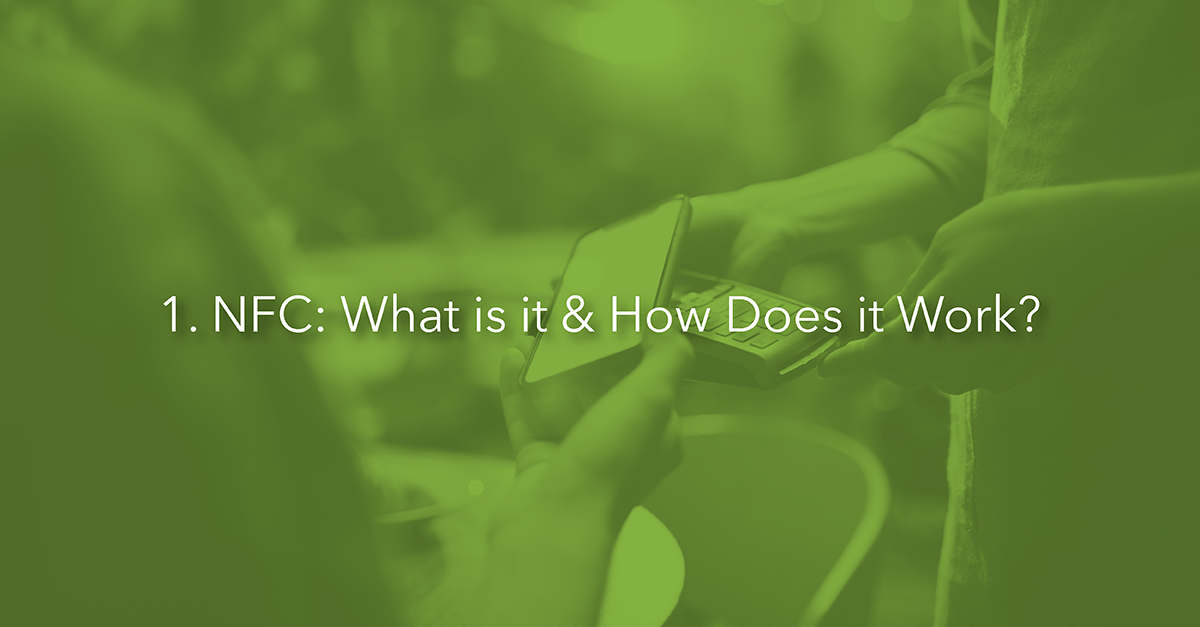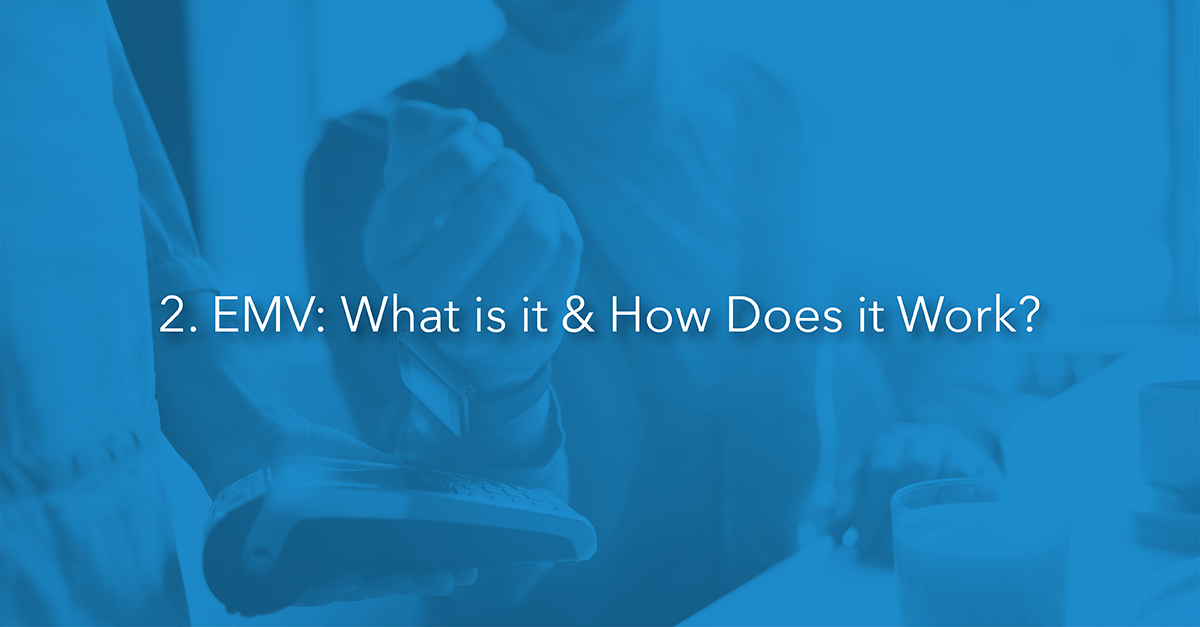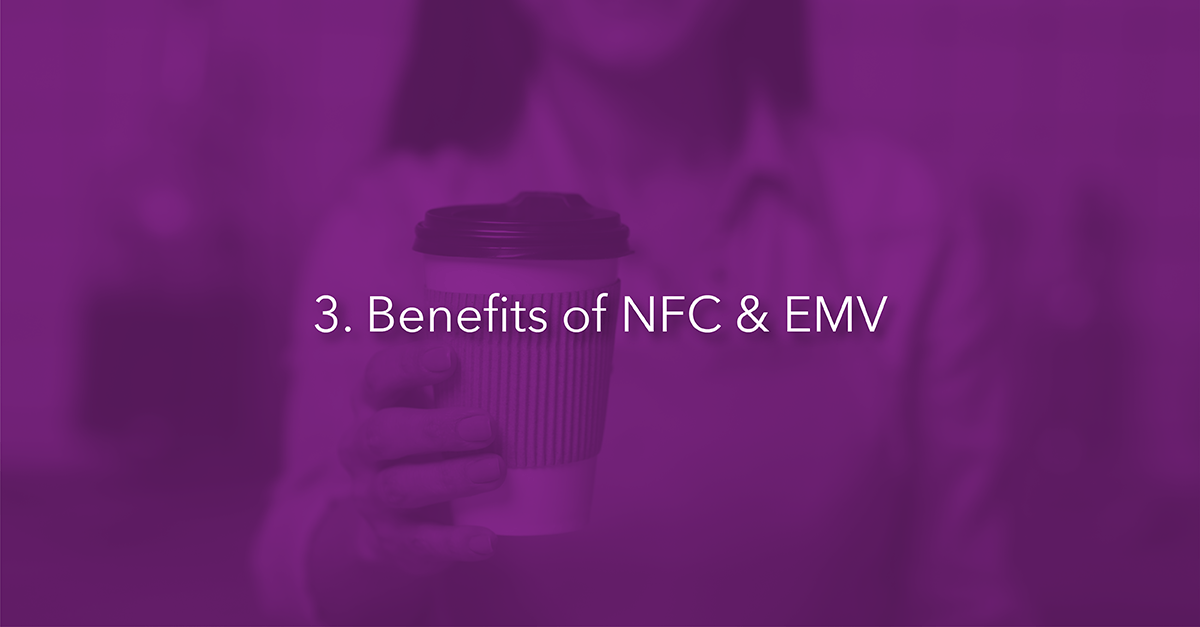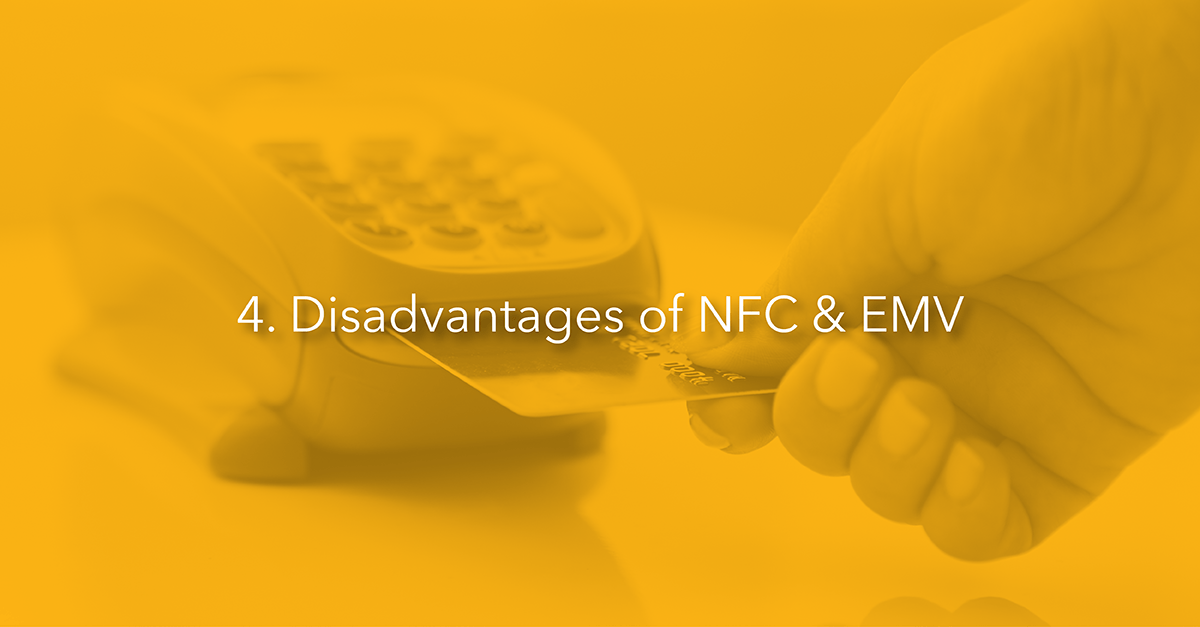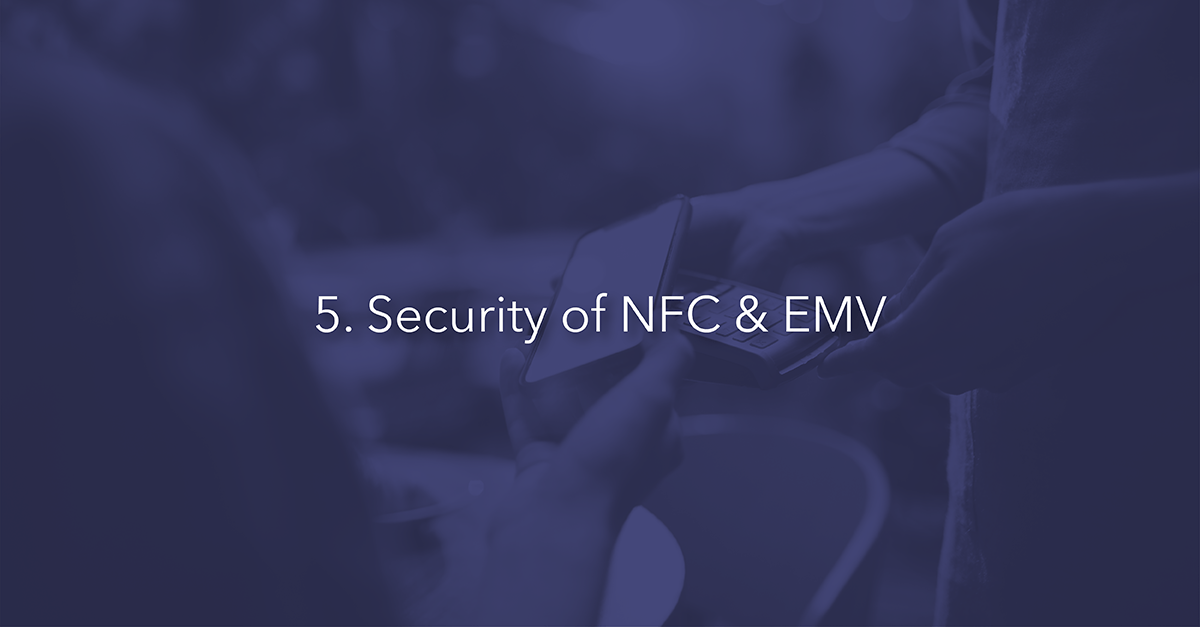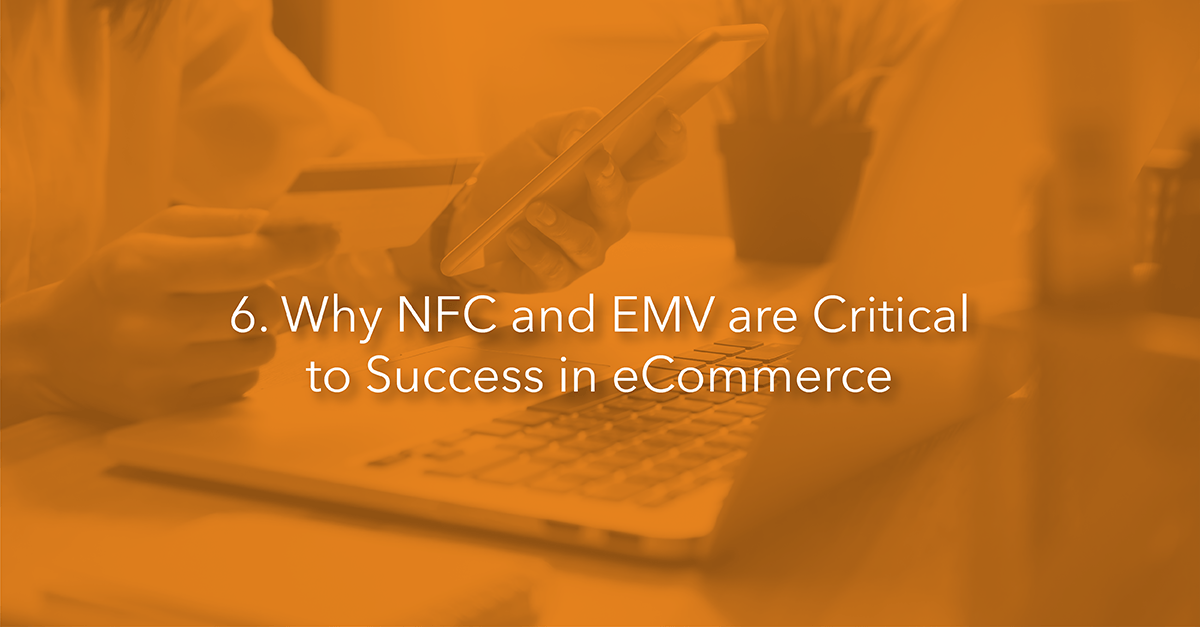EMV & NFC: The Differences, Benefits, and Uses
Did you know counting cash and change is safer than paying by credit card?
It's true! Paying with cash is safer than paying by credit card.
Why? Because every time you use a credit card, fraudsters have an opportunity to access your information.
In 2019, credit card fraud was the most common type of identity theft in the United States. Not to mention, in 2018, 24.26 billion dollars were lost due to payment card fraud worldwide.
It’s time to face the hard truth. While paying by credit card is convenient, it can put you at risk for payment card fraud.
As a consumer, you need to protect yourself when you pay at a store, restaurant, or gas station. And if you are a business owner, you have an important responsibility to protect your customers’ information.
So, how can you protect yourself from fraud risk as a business owner or consumer?
We can help you answer this question.
Thankfully, there are safer ways to complete or accept payments than traditional credit cards.
In the industry, these more secure ways of processing payments are called NFC and EMV.
In this article, we'll be exploring how NFC and EMV can help keep your customer's information secure and improve your business.
What you’ll learn about NFC and EMV from this article:
NFC: What Is It & How Does It Work?
- If you stand in line at a store and watch someone hold their smartphone near the payment terminal to pay, you’ve witnessed the magic of NFC.
EMV: What Is It & How Does It Work?
- The chip you see on an EMV-enabled credit card operates like a tiny computer. It is there to mitigate fraud risk and protect your personal information.
Benefits of Contactless Payment with NFC and EMV
- Dig a little deeper into why NFC and EMV are important and take a closer look at the benefits of supporting NFC and EMV.
Disadvantages of Contactless Payment with NFC and EMV
- While few and far between, there are some negative aspects of NFC and EMV as well. Take a look at some of the drawbacks to these payment options.
Security of NFC & EMV
- It’s true – payments made through NFC or EMV are far more secure than traditional card payments. Learn why.
Why NFC and EMV are Critical to Success in Commerce
- When your customers have to burn calories trying to figure out how to pay, or worry about the security of their payment, they aren’t happy.
Conclusion
- Get on board now, so you can benefit from the convenience and security these payment options offer for years to come.
NFC: What Is It & How Does It Work?
What is NFC?
NFC (near field communication) is a subset of RFID (radio-frequency identification), a technology that allows us to identify objects through radio waves. RFID is nothing new — it's been used for decades to scan items in grocery stores, identify luggage in baggage claims, and even tag cattle.
NFC, which was introduced in the early 2000s, uses a specific RFID frequency for close-range communications.
That means that two NFC-equipped devices can communicate with each other when they're close together.
You’ve probably already seen NFC in action. If you stood in line at a store and watched someone hold their smartphone near the payment terminal, then walk away without opening their wallet, you've witnessed the magic of NFC.
How did they just hold their phone up to a payment terminal and walk away a few seconds later?
The simplicity of the answer might surprise you - all you need is an NFC-equipped mobile device (almost all new phones are NFC-equipped) and an NFC-enabled point of sale system.
If you have those two components, technology will do the rest.
When a contactless payment is initiated by a customer holding or tapping a mobile device to the payment terminal, the NFC technology goes to work. Using a specific RFID frequency, the NFC-enabled reader and the smartphone pass encrypted information back and forth to each other to complete the payment.
And the best part is - the whole process takes just a matter of seconds.
This may sound almost too good to be true. However, keep in mind that if your point of sale system is not NFC-enabled, the process won't work.
That's why we made sure Total Touch® Point of Sale is NFC compatible - so you can serve your customers who want to pay in a few seconds with their phone.
Examples of NFC
- Perhaps the most popular example of contactless payment is Apple Pay. It works on any Apple products produced after the iPhone 6.
- Don’t worry, Android users! You haven’t been left behind.
- Common examples of NFC for non-Apple users are Google Pay and Samsung Pay.
- Some debit and credit cards have NFC technology that allows the customer to pay for items by tapping or waving their card above the card reader or terminal. These types of cards are called contactless payments cards.
EMV: What Is It & How Does It Work?
Have you noticed the small rectangular chip on your credit card? That chip represents the technology involved with EMV.
EMV stands for Europay, Mastercard, and Visa. It is a standard in the credit card industry for integrated circuit cards, point of sale terminals, and ATMs.
Historically, credit and debit cards only used a magnetic stripe to manage cardholder data. The cardholder would then sign a receipt at purchase.
This system did not provide a high level of security, as a signature can be forged, and the magnetic stripe proved relatively easy to hack and duplicate—revealing the cardholder's private information to criminals.
The chip you see on an EMV card operates like a tiny computer. It is there to mitigate fraud risk and protect your personal information.
So, how does EMV work?
The tiny "computer" in your card contains an integrated circuit chip, which encodes every transaction differently. If a criminal intercepts data from a chip card's transaction, the data cannot be reused to make another purchase.
Almost every single payment card issued today is an EMV card. That means all you have to do is make sure you have a point of sale system that is EMV-compatible, and you'll take an essential step towards protecting your customers.
To process an EMV transaction, the credit card is inserted vertically, chip first, into an EMV-enabled reader instead of swiping it horizontally on a magstripe reader.
That's it – simple and secure!
Benefits of Contactless Payment with NFC and EMV
The technology that both NFC and EMV uses is fascinating!
But, not everything new and flashy is beneficial. Is investing in an NFC and EMV compatible point of sale system worth it?
Absolutely.
We've already touched on some of the benefits of these technologies, but let’s dig a little deeper and take a closer look at the benefits of supporting NFC and EMV.
Benefits of NFC
There are so many benefits to making sure your point of sale system is NFC compatible. Here are a few examples:.
- NFC technology is here to stay. It is continually growing in popularity. By supporting NFC, you prove to your customers that you are keeping up with trends, and using the best technology available.
- A 2019 study by Pymnts, found that roughly 40.5% of U.S. consumers have downloaded at least one mobile payment app to their phones.
- NFC transactions are incredibly fast - they take just seconds.
- NFC can be used for more than just payments. Things such as reservations, booking tickets, and entry/exit passes can also be NFC compatible.
- NFC does not require manual configurations, pairing, or settings (like Bluetooth) - just an NFC compatible POS system.
- NFC is more secure than traditional magnetic stripe payment cards
- Smartphone payments offer new revenue sources via marketing offers and loyalty programs that can be transmitted directly from the merchant to the device.
- NFC increases workplace efficiency.
- NFC is the most convenient way to pay - customers don't even have to dig out their wallets or purses.
Benefits of EMV
- EMV transactions are secure and authenticated, which reduces the risk of fraud.
- By installing an EMV reader, you place liability on the card issuer in the case of fraud. Without an EMV reader, you may be liable in the case of credit card fraud.
- Almost everyone has an EMV card, so you'll always get paid.
- EMV is a global standard. Even foreign guests can use their cards in your business.
- EMV systems can operate in offline mode. Because EMV cards contain microprocessors that can interact with terminals, they can perform offline transaction verification and offline cardholder verification.
- Chip card payments offer new revenue sources via marketing offers and loyalty programs that can be transmitted directly from the merchant to the card.
There are plenty of benefits to incorporating both NFC and EMV into your point of sale system. If you have any questions about how easy this can be, contact our team of professionals at Total Touch.
Disadvantages of Contactless Payment with NFC and EMV
While few and far between, there are some negative aspects of contactless payment with NFC and EMV as well. Next, let’s take a look at some of the drawbacks to these payment options.
Negatives of Contactless Payment with NFC
What might give you pause about NFC? Well, there are a few things worth mentioning and exploring.
- While NFC transactions are undoubtedly more secure than regular credit card payments, this technology is not entirely free of risk.
- It only works within short distances (devices need to be 3 inches or less apart).
- It can be expensive for companies to adopt NFC enabled devices.
Negatives of Contactless Payment with EMV
Let's also take a look at a few of the negatives of EMV payment options.
- Upgrading to support EMV can be expensive.
- More data is sent with EMV transactions. Merchants will need to coordinate with their acquirer to support both message types while they continue to accept both EMV and magnetic stripe cards.
- Although EMV cards are way more secure than traditional cards, fraud can still happen.
Your business might not be ready for NFC and EMV payment methods right now,, but we sincerely advise you to consider investing in these technologies. The money and effort it takes initially are worth the long-term cost savings and growth your business will experience.
Security of NFC and EMV
We started this article off by addressing security.
Why?
Because security is essential.
If a customer experiences credit card fraud after making a payment at your business, it hurts more than just them. The fraud can also harm your business, either directly or indirectly. Even if the bank takes liability, the damage done to the trust you've built with customers may be irreparable.
We've already acknowledged that credit card fraud is impossible to avoid altogether, even with NFC and EMV compatible POS systems.
However, it is true that payments made through NFC or EMV are far more secure than traditional card payments.
Here’s why:
Magnetic stripe cards are magnetized. When you swipe them, the payment processor reads the magnetic fields and matches them to your bank account information. However, this data is static, making it easier for fraudsters to lift bank information and clone it onto a new card.
On the other hand, the data on EMV chip cards is constantly changing, making it extremely hard to isolate and extract.
To isolate and clone it, someone would have to get into the physical chip circuit and manipulate it to access your bank information. This is extremely difficult for even the most sophisticated fraudsters.
That helps us understand EMV security, but what makes NFC secure?
As opposed to the data on a magnetic stripe card, the data involved in an NFC transaction is encrypted and dynamic, meaning it's continually changing. As an example, let's take Apple Pay, which uses a technology called tokenization to safeguard bank details.
Here’s how EMV security works:
- Take a picture of your credit card and load it into your iPhone.
- Apple sends the details to your card's issuing bank or network.
- The banks and networks then replace your bank details with a series of randomly generated numbers (the token).
- That random number is sent back to Apple, which then programs it into your phone. This means that the account details on your phone can't be cloned into anything valuable to fraudsters.
Although the process changes slightly depending on the NFC system you use, the concept stays the same.
Encrypted, dynamic data keeps information from being cloned and stolen.
But maybe you aren't worried about your customer's information being stolen.
Even if that is the case, point of sale systems that support NFC and EMV are becoming increasingly essential in commerce.
Why NFC and EMV Are Critical to Success in Commerce
Why are NFC and EMV essential in commerce?
NFC and EMV are dependable, secure payment methods. And remember, just because you have a POS system that supports NFC and EMV doesn't mean you can't accept cash.
Basically, accepting NFC and EMV payments increases your payment acceptance options. This, in turn, can help you retain more customers and increase sales. Here are a few examples:
- Potential clients won't turn away when they realize they don't have enough cash in their wallets.
- Customers that are worried about security gain peace of mind when they know you are doing everything you can to protect them.
- Loyalty is encouraged when customers realize how simple it is to pay at your place of business.
And here’s the truth: easy, convenient, and safe is a big deal to your customers.
When your customers have to burn calories trying to figure out how to pay, or worry about the security of their payment, they aren't happy.
They won't come back, and they might even tell all their friends and family to stay away from your business.
That's why we want to take this one step further and urge you to accept both NFC and EMV payment options - not just one of them.
Allowing your customers to pay with whatever medium they prefer is a big deal. It allows them to feel as though the process is easy, convenient, and safe.
So, don't put yourself in a box by utilizing a POS system that is compatible with a single payment processor.
Instead, look for a POS system like Total Touch, that gives you multiple options for payment processing.
Are NFC and EMV right for your business (and customers?)
NFC and EMV are great advancements in technology. They are payment options that are here to stay.
Get on board now, so you can benefit from the convenience and security these payment options offer for years to come.
If you need to upgrade your POS system to be NFC and EMV compatible, contact Total Touch today. We provide a complete POS system that is powerful, simple, and backed with great features. We also offer full support in the United States.
We received an award from the CIO Review for being one for the 20 Most Promising POS Solutions in 2019, and we are ready to help you get results.
Contact our team today; we look forward to working with you!
